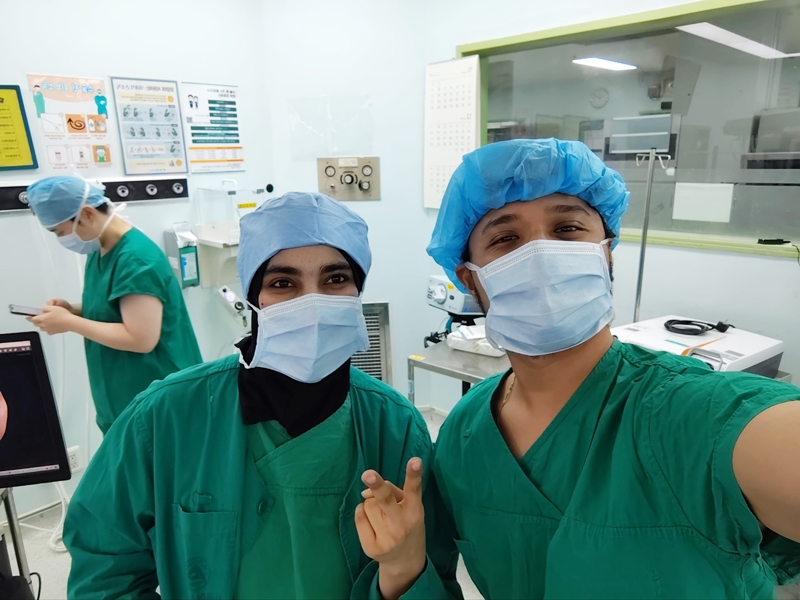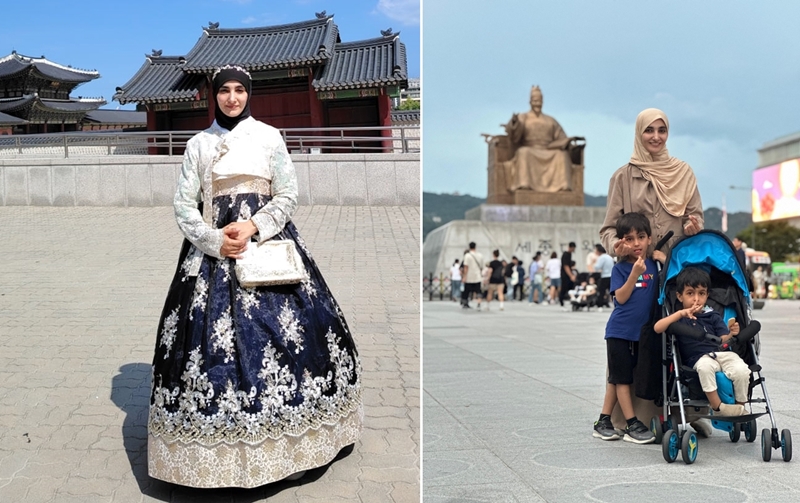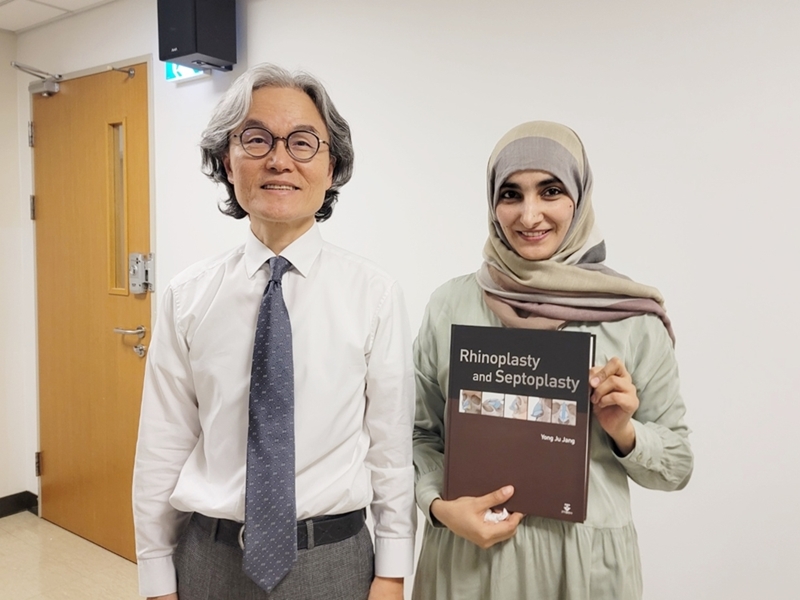-
- Global AMC MENU
- NEWS
- HEALTH
- PEOPLE
- Introduction
"I Want To Treat Omani Patients Using The Newly Learned Surgical Technique for Empty Nose Syndrome."
▲Dr. Fatima Al Yarabi from Department of Otolaryngology-Head and Neck Surgery
I specialize in nasal disorders and have been training at Asan Medical Center since August last year. I have been learning the latest surgical techniques for nasal conditions such as nasal septal deviation, empty nose syndrome (ENS), and septal perforation, along with the unique clinical know-hows of Asan Medical Center. It has also been my first time experiencing advanced surgical support technologies, including 3D imaging systems for surgical sites. I aim to pursue further research into novel treatment methods for nasal diseases.

▲#At the Operating Rooms #With fellow international scholars
I was truly amazed by the scale of the operating rooms
At Asan Medical Center, several operating rooms are grouped into a unit called a ‘rosette.’ There are 10 rosettes with a total of 74 operating rooms, making Asan Medical Center where the most patients undergo surgery in South Korea. I heard the entire surgical area spans a space equivalent to three soccer fields, which was hard to believe at first. However, once I stepped inside, I could see how immense it really was. I was especially impressed by the seamless coordination among medical staff, including doctors and nurses within each rosette and operating room, with patient safety as the priority.
A memorable moment was meeting a patient from the UAE in the consultation room.
I was delighted to meet a patient from the United Arab Emirates (UAE) during a consultation with Professor Yong Ju Jang in the Department of Otolaryngology-Head and Neck Surgery, as both Oman and the UAE share Arabic as their language. The patient had undergone three surgeries for septal perforation in the UAE but the issue remained unresolved, which is why they had to come all the way to Asan Medical Center. I was happy to use Arabic again after a long time, as I acted as an interpreter between the patient and the professor. I felt a sense of pride when I thought about how patients from all over the world seek treatment at Asan Medical Center, and realizing that I am receiving training here.

▲#Beautiful Hanbok #In front of King Sejong Statue #Lovely sons
I also found the public transportation system of South Korea incredibly convenient.
Whenever I had free time on the weekends, I enjoyed exploring Seoul using public transit. I mainly took the subway, which is particularly convenient for foreigners, as it offers transfer across all lines and made it possible for me to visit nearly every part of the city. I was also amazed that I could transfer seamlessly between the subway and buses. Additionally, the smartphone applications made it easy to navigate the entire public transportation system, which was very convenient. At first, it felt strange to stand so close to others during the busy hours on the subway, but I quickly adapted over time.

▲#With Professor Yong-Ju Jang #I respect you!
I had the opportunity to learn the ENS surgery technique firsthand, which I had only heard about.
Empty Nose Syndrome (ENS) occurs when excessive space in the nasal cavity leads to dryness, irritation, and difficulty breathing. In Oman, we currently manage ENS with supportive treatments to increase humidity, rather than surgery. I am eager to return home and use what I have learned to help relieve patients’ discomfort. Additionally, learning a distinctive surgical technique for septal perforation, exclusive to Asan Medical Center, which differs from the methods I was familiar with. I believe this fellowship has been an incredibly valuable experience for me as a specialist in nasal disorders. I would like to take this opportunity to sincerely thank my supervising professor, Professor Yong-Ju Jang, for his guidance and support.












